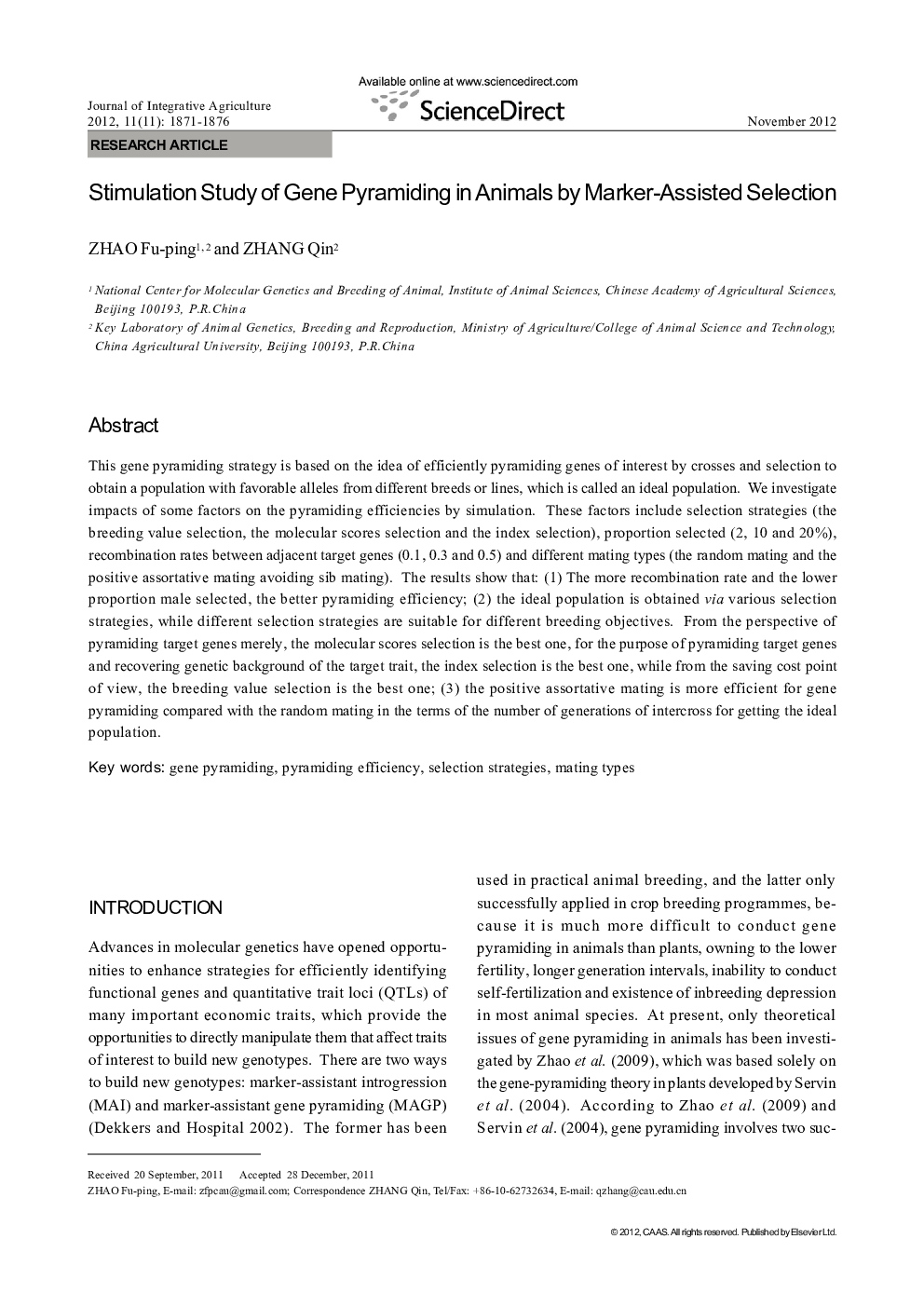| Article ID | Journal | Published Year | Pages | File Type |
|---|---|---|---|---|
| 4494991 | Journal of Integrative Agriculture | 2012 | 6 Pages |
This gene pyramiding strategy is based on the idea of efficiently pyramiding genes of interest by crosses and selection to obtain a population with favorable alleles from different breeds or lines, which is called an ideal population. We investigate impacts of some factors on the pyramiding efficiencies by simulation. These factors include selection strategies (the breeding value selection, the molecular scores selection and the index selection), proportion selected (2, 10 and 20%), recombination rates between adjacent target genes (0.1, 0.3 and 0.5) and different mating types (the random mating and the positive assortative mating avoiding sib mating). The results show that: (1) The more recombination rate and the lower proportion male selected, the better pyramiding efficiency; (2) the ideal population is obtained via various selection strategies, while different selection strategies are suitable for different breeding objectives. From the perspective of pyramiding target genes merely, the molecular scores selection is the best one, for the purpose of pyramiding target genes and recovering genetic background of the target trait, the index selection is the best one, while from the saving cost point of view, the breeding value selection is the best one; (3) the positive assortative mating is more efficient for gene pyramiding compared with the random mating in the terms of the number of generations of intercross for getting the ideal population.
